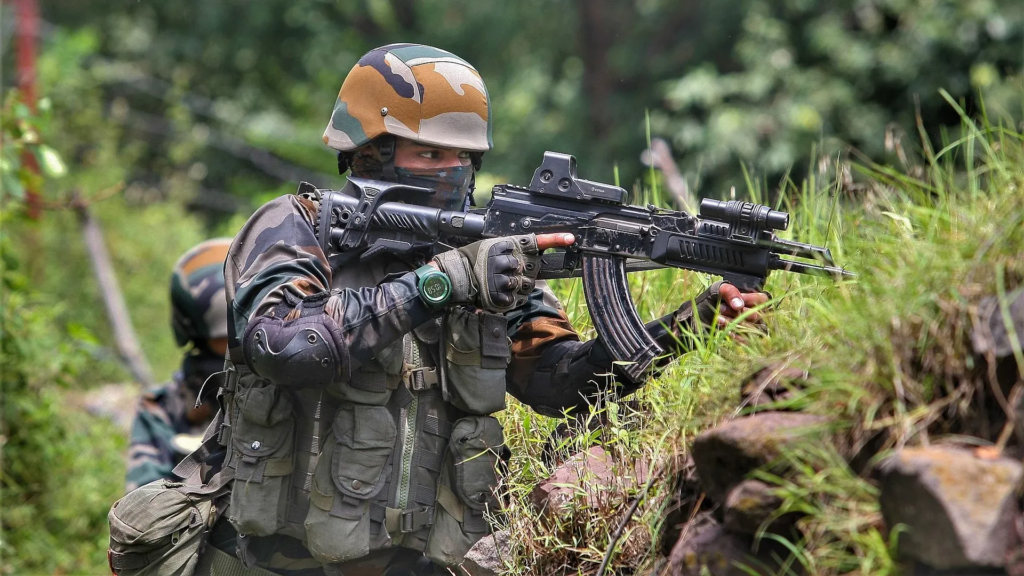“Operation Sindoor”: India’s Large-Scale Retaliatory Airstrike Plan
More than a week after the terrorist attack in Pahalgam, India, as May 2025 began, many thought the India-Pakistan conflict to be resolved peacefully through negotiations. However, Pakistani intelligence received a mysterious warning that India was planning a major retaliatory airstrike against Pakistan.
India has named this military operation “Operation Sindoor.” In Indian culture, “Sindoor” refers to the sacred powder that married Hindu women apply to their hair parting. This name symbolizes India’s intent to avenge the victims of the terrorist attack, during which wives and daughters witnessed terrorists shooting their loved ones.
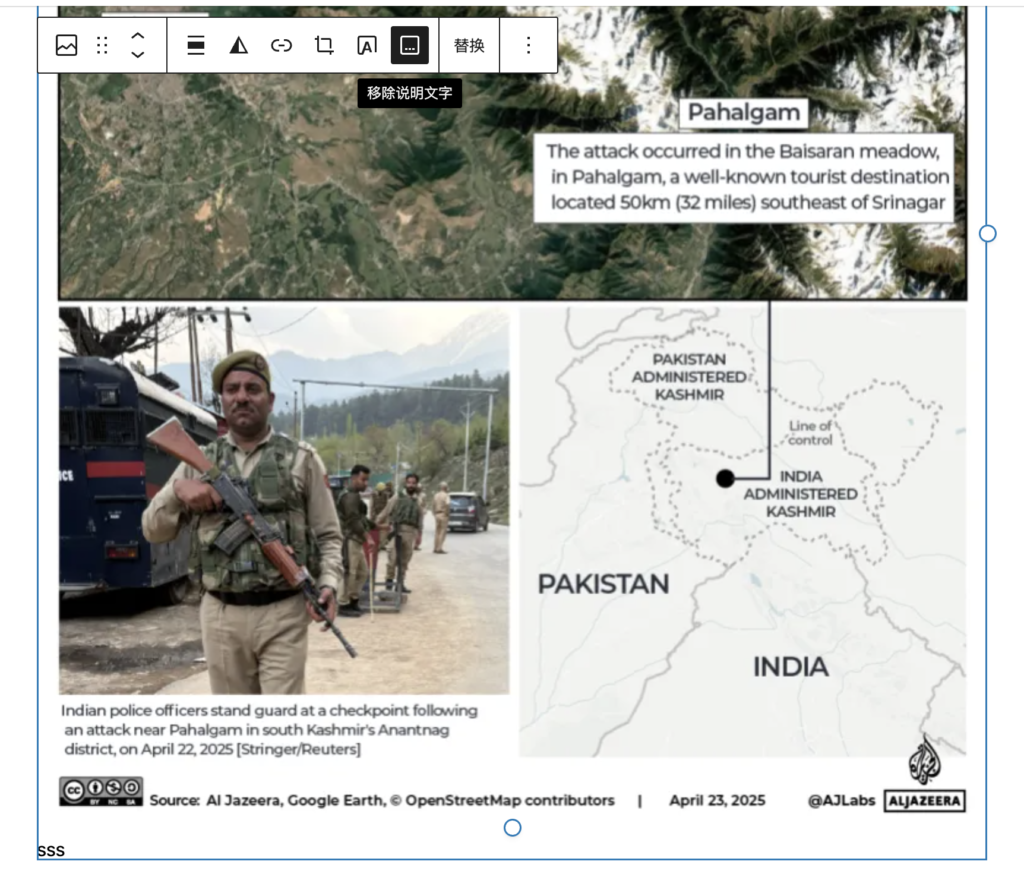
In response to this potential threat, Pakistan immediately raised its combat readiness level. The Pakistani Air Force deployed over a dozen reconnaissance aircraft to carry out surveillance missions and activated cyber warfare units specifically to monitor the Indian military’s communication links. Pakistan understands that if India mobilizes fighter jets for an attack, coordination through communication will be essential. By keeping a close watch on Indian military communication channels, Pakistan hopes to predict their next moves.
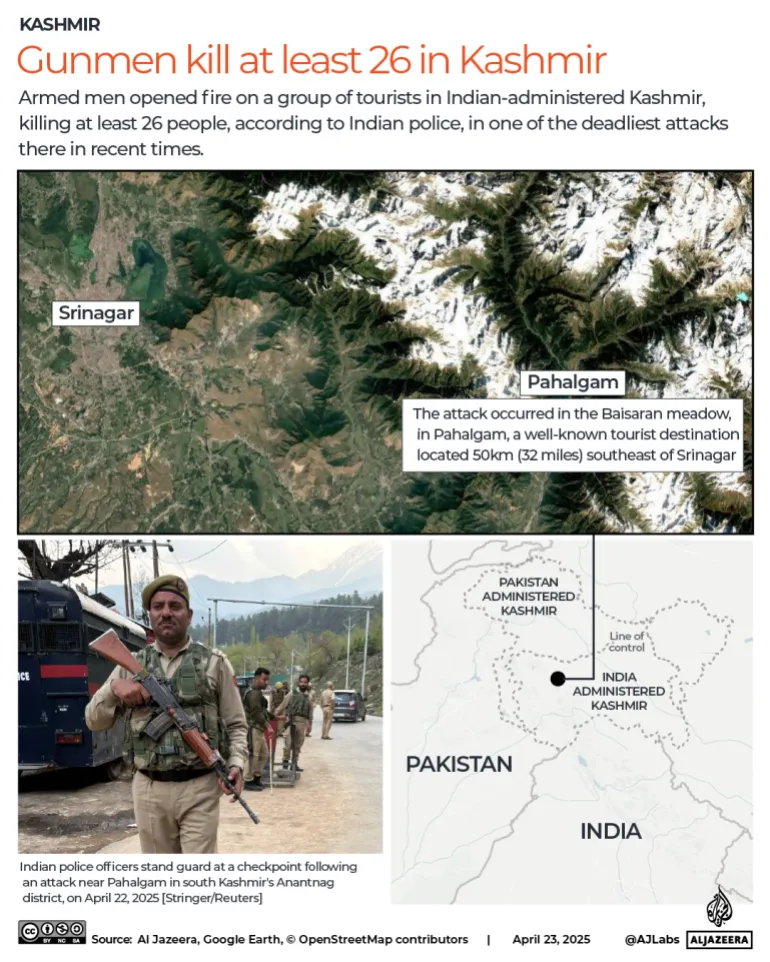
Additionally, Pakistan has made use of its reconnaissance satellites in space. They adjusted the satellites’ orbits to ensure they pass over India every half hour. There are even reports that Pakistan urgently acquired several commercial high-definition satellites, allowing at least six reconnaissance satellites to monitor India’s military movements around the clock with no blind spots.
Since May, it’s clear that all of Pakistan’s intelligence agencies have been working at full capacity.
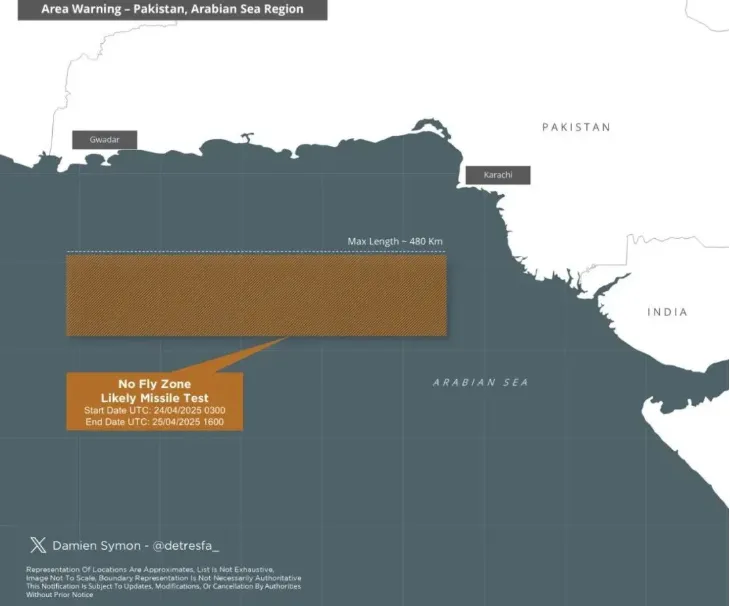
Precise Intelligence and Tactical Deployment: Pakistan Air Force’s Preemptive Strike
On the evening of May 6, a Pakistani intelligence analyst monitoring satellite imagery discovered that several SU-30K aircraft were being mobilized at an airbase hidden in the southern mountains of Jharkhand late at night. These aircraft were undergoing final ground checks. Upon receiving this information, Pakistan’s Third Intelligence Bureau quickly issued a combat alert.
Half an hour later, the analyst noticed that in another part of India, multiple Rafale fighters, already loaded with missiles, were ready for action.
With accurate intelligence secured, the Pakistan Air Force needed to prepare its deployment in advance. This required predicting the flight paths of the Indian aircraft.
In less than half an hour, the Pakistan Air Force’s staff group delivered an analysis report. It stated that there was an 80% chance the Indian aircraft would try to slip through a valley in Kashmir to avoid Pakistani radar detection.
The staff group based this conclusion on the U.S. Navy’s assessment standards. As far back as World War II, the U.S. Navy had used scientific evaluation methods, which proved highly effective in the Pacific War. For instance, during the Battle of Surigao Strait, the U.S. forces predicted the Japanese fleet’s route, and the actual outcome closely matched their assessment.
If this prediction holds true, the Pakistan Air Force must position its aircraft around this area ahead of time.
Meanwhile, Pakistani intelligence operatives in India have delivered a critical piece of intelligence.
The Indian Air Force has deployed an additional 12 Su-30MKIs and over a dozen Rafale fighters to the Srinagar Airbase, with the possibility of sending some Tejas fighters as well.
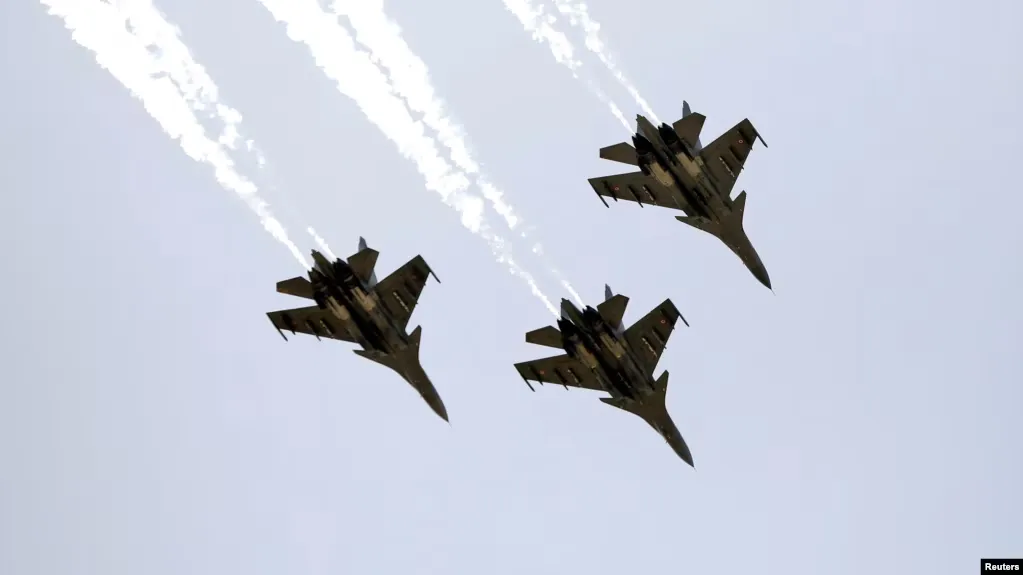
Furthermore, of the three EMB-145I early warning aircraft dispatched by the Indian Air Force, at least one has reached a frontline airport in Kashmir. The others are positioned at airbases behind Jammu, allowing for uninterrupted airborne patrols.
Reconnaissance and air defense capabilities along the Indian-Kashmir border have been bolstered. If the Pakistani Air Force aims to intercept Indian fighters at the border, they must avoid exposing their squadrons to concentrated Indian Air Force fire. This means relying on covert strikes and steering clear of dogfights with Indian jets.
As a result, a surprise attack remains Pakistan’s only feasible strategy, provided they can avoid detection by India’s electronic early warning systems.
In the early hours of May 7, around 1 a.m., the Pakistani Air Force deployed several early warning aircraft to conduct continuous patrols over the safe zone behind Kashmir. They also sent reconnaissance planes eastward to locate any Indian assault squadrons promptly. All Pakistani fighter jets on reconnaissance missions were armed with air-to-air munitions, ready to intercept any Indian aircraft they might encounter.
JF-17 Fighters: Mastering Modern Air Combat with Advanced Technology and Systemic Advantages
Around 2 a.m., the Pakistani Air Force dispatched its first batch of reconnaissance aircraft and sent two squadrons—comprising over 40 fighter jets and two large early warning planes—toward the Indian side of Kashmir.
The Pakistani Air Force demonstrated tactical brilliance by leveraging the JF-17’s key strengths. Its electronic reconnaissance and radar capabilities far surpass those of India’s Su-30MKIs and Rafales. Additionally, the JF-17 is equipped with an advanced low-probability-of-intercept (LPI) fire control radar, developed by the Nanjing Research Institute of Electronics Technology (NRIET).
In modern aerial combat, activating a fighter’s fire control radar immediately exposes its position, posing a significant survival risk. The JF-17 addresses this with its cutting-edge LPI radar, which uses intelligent signal filtering to trigger alerts only for radiation signals that match attack profiles while remaining silent to routine scans. The core technology involves modulating the radar’s waveform to mimic background electromagnetic noise, making it indistinguishable to enemy radar warning receivers (RWR). This allows the JF-17 to balance active detection with stealthy penetration.
Previously, this technology was exclusive to top-tier U.S. fighters like the F-22 and F-35.
Initially, the JF-17 was intended as a carrier-based air superiority fighter for the navy but was later repositioned as a multirole medium-weight aircraft. When developing the JF-17 Block III, the Chengdu Aircraft Industry Group (a leading Chinese fighter jet manufacturer) adopted a differentiated strategy for the international arms market. The global market for 4.5-generation fighters has long been dominated by costly F-16 variants, while nations capable of affording the F-22 or F-35 are typically U.S. allies. China opted to break into the market with a cost-effective medium-weight fighter.
Thanks to its remarkable cost-performance ratio, the JF-17 Block III has successfully penetrated international markets. After Pakistan became the first to induct it, Egypt followed suit in 2025 by investing 25 billion yuan to acquire 40 J-10CEs (including support systems), directly competing with Israel’s F-35I. Other developing nations, such as Sudan, have also expressed interest in procurement, marking China’s first substantial foothold in the high-end fighter jet market.
Actual Air Combat on May 7: JF-17 Fighters Achieved an Overwhelming Victory
On May 7, the Pakistani Air Force strategically deployed the JF-17 fighter jet, capitalizing on its unique advantages. They sent two squadrons of JF-17s on search missions toward Indian-controlled Kashmir. While the JF-17’s fire control radar in passive mode has a limited long-range detection range—covering only a 30-degree sector—and wide-area searches reduce this distance further, the Pakistani Air Force turned this limitation into a strength. By coordinating eight JF-17s to adjust their radar angles in a cross-overlapping pattern, they expanded their detection to a 150-degree sector. This allowed them to spot early warning aircraft 500 kilometers away and fighter radar signals 300 kilometers out, fully meeting their tracking needs.
At 2:50 a.m., approximately 300 kilometers from Dera Ghazi Khan, the JF-17 formation picked up radar signals from Indian Su-30MKIs. Using Doppler analysis, they confirmed the Indian jets were descending for a surprise strike into Pakistani territory. The Pakistani Air Force command center’s 3D projections provided real-time updates on both sides’ positions. Following their pre-set tactics, the JF-17s went stealth, while ZDK-03 early warning aircraft focused their radar beams to extend the detection range, keeping watch beyond the reach of Indian early warning systems and missiles.
To minimize losses and preserve evidence of India’s incursion, Pakistan planned to hold off on counterattacks until the Indian jets fired their missiles. The JF-17s and air defense systems would then strike back from a safe, non-contact distance.
By 3:30 a.m. on May 7, Indian fighter jets had penetrated 200 kilometers into Pakistani airspace before early warning reports arrived. Two squadrons kept Pakistani air defenses on alert, while a third launched surprise attacks on targets in Bahawalpur, Muridke, Dera Ghazi Khan, Sialkot, Bhimber, Kotli, and Muzaffarabad.
Around 4 a.m., the sound of fighter jets echoed across Pakistan. An attack on the Ahmedpur Sharqia Mosque near Bahawalpur in Punjab Province killed five people, including a 3-year-old girl. Strikes in Sialkot, Shakargarh, and the Kashmir region claimed the lives of a 16-year-old girl and an 18-year-old boy. India claimed these targets were Lashkar-e-Taiba strongholds linked to terrorism, insisting civilians were not the intended focus.

Though the upgraded Su-30MKI boasts improved performance, it falls short of the J-20 Mighty Dragon and lags significantly behind the JF-17. With a maximum endurance of less than two hours and no aerial refueling capability, it must race back at full speed after launching its missiles.
This moment exposed the Indian Air Force at its weakest.
At 4:25 a.m., the JF-17 lead aircraft took the initiative, activating its fire control radar to lock onto Indian fighters. Five seconds later, after securing the lock, the attack formation switched off their radars and fed the data link into the PL-15 missiles. They maintained a speed of 1,500 kilometers per hour, continuing to guide the missiles—a tactic so well-rehearsed after hundreds of drills that it had become second nature to the pilots.
Six JF-17s then launched a coordinated cross-attack, with each aircraft firing a single PL-15 to engage three targets. At that moment, eight Indian Su-30MKIs were scanning the western airspace with their radars at full power—four watching westward, and four covering the northwest. Yet, they failed to spot the JF-17 formation over a hundred kilometers away.
The Su-30MKIs were hamstrung by their passive phased array radars, limited to a detection range of just 60 kilometers, leaving them at a constant disadvantage in beyond-visual-range combat. When missile warnings blared at 4:34 a.m., the aircraft faced a cross-attack from two PL-15s, reducing their survival odds to less than 1%.
China’s PL-15 missile is engineered to tackle targets pulling 12G maneuvers. To achieve an 80% hit rate, it requires a 30G maneuvering capability. By comparison, the -12E missile boasts 50G performance, while the Indian Su-30MKI, when facing a target pulling 9G, can only manage 7G. Even if the Su-30MKI pulls 9G, its survival chance against a dual-missile strike drops below 0.5%.
Statistically speaking, such a slim probability is practically zero.
In real combat, Pakistani JF-17s fired PL-15s from 150 kilometers away, far outranging India’s ASTRA missiles. Designed to counter upgraded U.S. AIM-series missiles, the PL-15 leverages dual-pulse engine technology to extend its powered range to 160 kilometers, with a theoretical head-on range reaching 300 kilometers. By Western standards, this places it in the long-range air-to-air missile category, making it nearly impossible for Indian Rafales and Su-30MKIs to evade, even beyond the ASTRA’s reach.
Failure of India’s Early Warning System: Battlefield Transparency and Command Lag
The Indian “Phalcon” early warning system failed to provide timely warning of the PL-15 missile attack. After the Su-30MKI was struck by the first PL-15E, three subsequent missiles hit in rapid succession. The fighter jet managed only a fragmented combat alert before disintegrating mid-air. This alert was ultimately irrelevant, as the explosion of the multi-ton aircraft and its fuel lit up the sky, visible over a hundred kilometers away, while the Indian Phalcon early warning aircraft was positioned to the east of the area.
At 4:30 a.m., the Indian Su-30MKI squadron collectively activated their fire control radars. However, their passive phased array radars, built to early 21st-century standards, lagged far behind modern technology. The Indian Air Force had long trusted the French Rafale fighters, even believing they could rival China’s J-20. Imported at $200 million each and enhanced with targeted upgrades, the Rafale did outperform the Su-30MKI. Yet, in real combat, neither the Rafale nor the Su-30MKI could engage the Pakistani JF-17 fighters or escape their attack range. With the Indian early warning system completely ineffective, their forces were left blind on the battlefield.
India had once touted the Phalcon’s infrared detection and missile interception capabilities, but the air battle on May 7 exposed its lack of superiority. Pakistan, meanwhile, upgraded its ZDK-03 early warning aircraft to the KJ-500 standard, integrating 2020s-era active and passive dual-mode phased array radar technology. This enabled radio-silent penetration, allowing the Pakistani Air Force to launch PL-15 missiles from 200 kilometers away for beyond-visual-range strikes. In contrast, the Indian Phalcon relied on Russian data links, requiring two relays in its command chain, which crippled efficiency and led to a lopsided defeat.
The Key to Victory in Modern Air Combat: Intelligence and Command Systems
During the May 7 air clash, the Indian “Phalcon” early warning aircraft’s 200-kilometer detection radius paled against the JF-17’s 300-kilometer passive detection range. Supported by the ZDK-03 early warning aircraft, the JF-17 easily evaded the Phalcon’s reach. India’s air defense, deprived of effective early warning, couldn’t counter PL-15 missile strikes launched from 200 kilometers away. Even deploying F-22 fighters wouldn’t have pierced the battlefield transparency system Pakistan built with Chinese technology.
The decisive gap stemmed from the Phalcon’s lack of dual-mode phased array radar, leaving it vulnerable to passive detection and fully exposed to Pakistani tracking. Capitalizing on electronic reconnaissance, the Pakistani Air Force executed beyond-visual-range strikes and withdrew swiftly, delivering a crushing blow to India. This modern air battle—the first real showdown between the Rafale, Su-30MKI, and China’s JF-17 fourth-and-a-half-generation fighters—was a landmark event. For years, enthusiasts and experts debated the three aircraft’s merits through simulations. The May 7 India-Pakistan clash settled it: the JF-17, backed by an early warning-supported intelligence and command system, dominated fighters with superior paper stats.
This engagement laid bare the future of air combat: advanced intelligence and command systems will trump the performance of standalone platforms. The Rafale, despite its impressive specs, faltered without systemic support, unable to match the JF-17 bolstered by early warning coordination.
Will India and Pakistan descend into full-scale war? What will the future hold for the region? The author will explore these questions in depth and offer answers in the second part of the article.
Sourse:
- Netflix’s journey to becoming an international “coal boss”
- Bong Joon-ho Wikipedia Page
- Snowpiercer IMDb Page
- Korean Wave Wikipedia Page
- Hong Kong Action Cinema Wikipedia Page
- Anime Wikipedia Page
- Parasite Academy Awards Page
- One Hundred Years of Solitude Wikipedia Page
- Global Box Office 2024 Report Deadline Article
